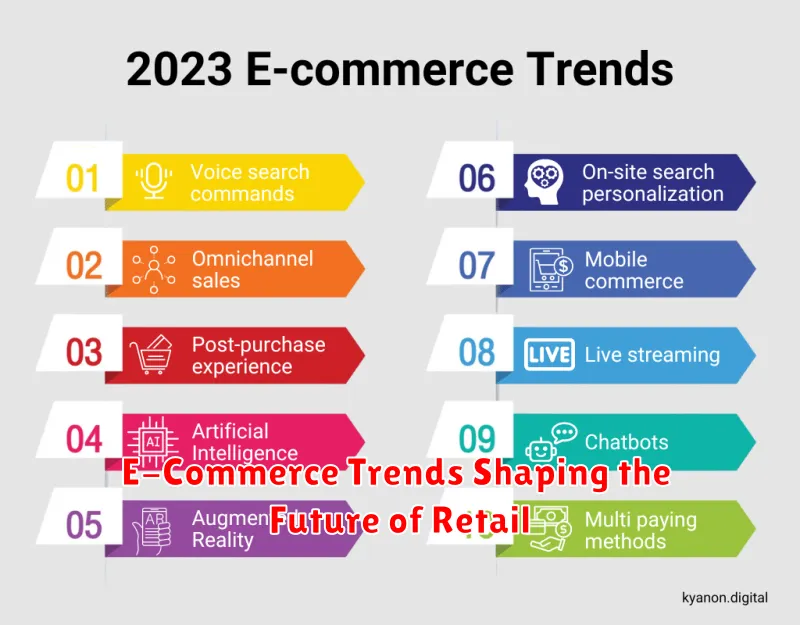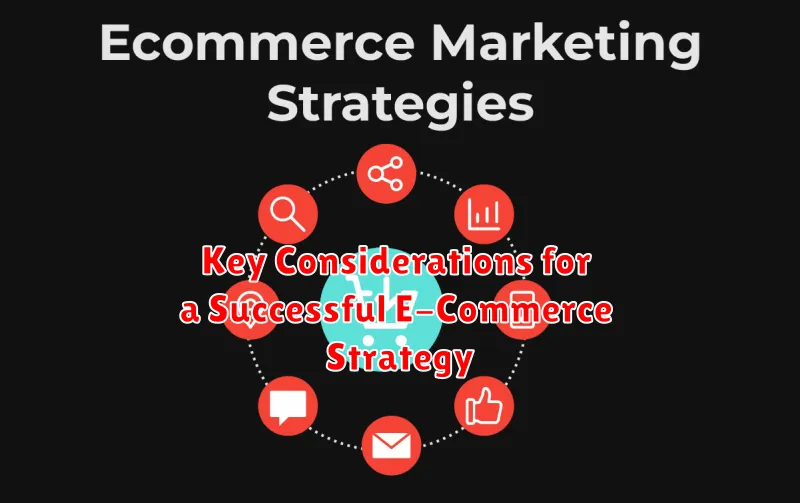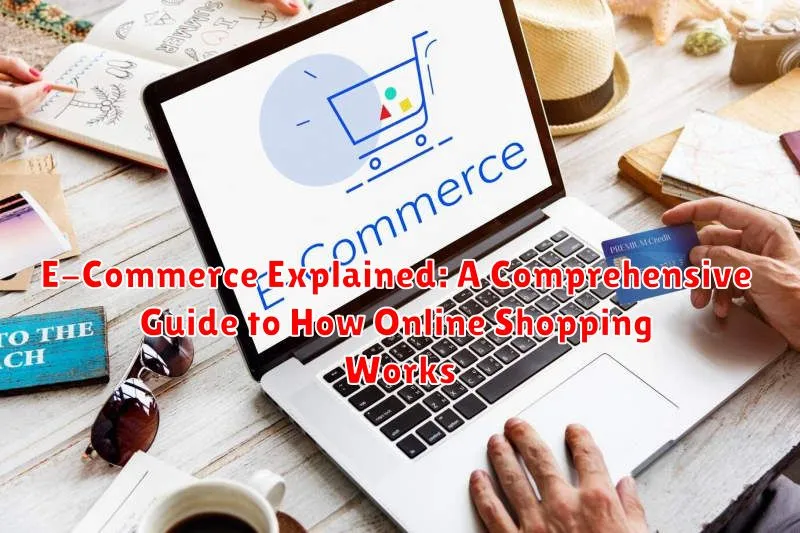E-commerce, also known as electronic commerce or online shopping, has revolutionized the way businesses operate and consumers shop. This comprehensive guide delves into the intricacies of e-commerce, providing a clear understanding of how online shopping works, from browsing products to completing a purchase. Whether you are a seasoned online shopper or new to the world of e-commerce, this guide will equip you with the knowledge you need to navigate the digital marketplace effectively. We will explore the key components of e-commerce, including website functionality, payment processing, security measures, and the logistics of order fulfillment, offering valuable insights into the entire online shopping experience.
Understanding the mechanics of e-commerce is crucial in today’s digital age. This guide will cover various e-commerce models, including business-to-consumer (B2C), business-to-business (B2B), and consumer-to-consumer (C2C), highlighting their unique characteristics and functionalities. We will also discuss the benefits and challenges of e-commerce for both businesses and consumers, addressing topics such as online security, data privacy, and the evolving landscape of online shopping trends. By the end of this guide, you will have a comprehensive understanding of e-commerce and be well-prepared to engage in the world of online shopping with confidence.
Defining E-Commerce and Its Various Forms
E-commerce, short for electronic commerce, refers to the buying and selling of goods or services using the internet. It encompasses a wide range of activities, from online shopping and ordering takeout to online banking and paying bills.
E-commerce can be categorized into various forms based on the parties involved. Some common models include:
- Business-to-Consumer (B2C): This is the most common form, where businesses sell products or services directly to individual consumers. Examples include online retailers like Amazon and clothing stores.
- Business-to-Business (B2B): This involves transactions between businesses, such as a wholesaler selling to a retailer.
- Consumer-to-Consumer (C2C): This model facilitates transactions between individuals, often through platforms like eBay or Craigslist.
- Consumer-to-Business (C2B): In this model, individuals offer products or services to businesses. An example is a freelancer offering writing services to a company.
Exploring the Mechanics of Online Shopping
The online shopping process involves a series of steps that seamlessly connect the customer with the seller. It begins with product discovery, where customers browse or search for desired items.
Once an item is selected, it is added to the shopping cart, a virtual holding area for chosen products. The customer can review the cart’s contents, adjusting quantities or removing items as needed.
Checkout is the next stage. This involves providing shipping information, selecting a delivery method, and choosing a payment option. This information is then transmitted securely to the merchant.
Behind the scenes, the merchant’s systems process the order, verifying inventory and initiating the fulfillment process. This includes packaging and shipping the order to the customer’s specified address.
Finally, the customer receives the order. Many platforms provide order tracking, allowing customers to monitor their package’s journey from dispatch to delivery.
Understanding the Role of Payment Gateways
Payment gateways are the critical link between online shoppers and e-commerce businesses. They securely authorize and process payments, ensuring a smooth transaction for both parties. Think of them as the digital equivalent of a point-of-sale system in a physical store.
When a customer completes an online purchase, the payment gateway steps in. It encrypts the sensitive payment information, such as credit card details, and transmits it securely to the payment processor.
The payment processor then communicates with the customer’s bank and the merchant’s bank to verify the funds and authorize the transaction. Once approved, the payment gateway relays the confirmation back to the e-commerce website, allowing the order to be processed and fulfilled.
Key functions of a payment gateway include:
- Encryption: Protecting sensitive data during transmission.
- Authorization: Verifying the customer’s ability to pay.
- Settlement: Transferring funds from the customer to the merchant.
By facilitating these processes, payment gateways play a vital role in enabling secure and efficient online transactions, making them an essential component of the e-commerce ecosystem.
The Importance of Secure Transactions in E-Commerce
Security is paramount in e-commerce. Customers entrust businesses with sensitive information, including personal and financial details. Secure transactions are crucial for building trust and maintaining a positive reputation.
Several technologies contribute to a secure online shopping experience. SSL (Secure Sockets Layer) encryption safeguards data transmitted between the customer’s browser and the e-commerce website. This encryption prevents unauthorized access to sensitive information during transmission.
PCI DSS (Payment Card Industry Data Security Standard) compliance is another vital aspect. This set of security standards ensures that businesses handling credit card information maintain a secure environment. Adherence to PCI DSS significantly reduces the risk of data breaches and fraud.
Furthermore, robust authentication methods, such as two-factor authentication, add an extra layer of security, protecting accounts from unauthorized access even if passwords are compromised. By implementing these security measures, e-commerce businesses can create a safe and trustworthy online shopping environment for their customers.
The Impact of Mobile Commerce on Online Shopping
Mobile commerce, or m-commerce, has revolutionized the e-commerce landscape. The widespread adoption of smartphones and tablets has placed online shopping directly in the hands of consumers, anytime, anywhere. This accessibility has significantly impacted consumer behavior and reshaped the way businesses operate online.
Increased Convenience is a primary driver of m-commerce growth. Consumers can browse and purchase products on-the-go, eliminating the need for a desktop computer. This ease of access has led to a surge in impulse purchases and a blurring of the lines between online and offline shopping experiences.
Mobile-Optimized Experiences are crucial for success in m-commerce. Businesses must ensure their websites and apps are responsive and user-friendly on smaller screens. Features like streamlined checkout processes and mobile payment options are essential for capturing mobile shoppers.
The rise of m-commerce has also fueled the growth of location-based services and personalized marketing. Businesses can leverage location data to target consumers with relevant offers and promotions, enhancing engagement and driving sales.
E-Commerce Trends Shaping the Future of Retail

The e-commerce landscape is constantly evolving. Staying ahead of the curve requires understanding the key trends shaping the future of retail. Mobile commerce continues its rise, with increasing numbers of consumers shopping primarily through smartphones. This demands mobile-first website design and streamlined checkout processes.
Personalization is another crucial trend. Customers expect tailored shopping experiences based on their past behavior and preferences. This includes personalized product recommendations, targeted advertising, and customized communication.
Augmented reality (AR) and virtual reality (VR) are transforming how consumers interact with products online. AR allows customers to visualize products in their own environment, while VR offers immersive shopping experiences.
The rise of social commerce integrates shopping seamlessly with social media platforms. Consumers can discover and purchase products directly through social media channels, blurring the lines between social interaction and online shopping.
Finally, sustainability is becoming increasingly important for consumers. E-commerce businesses are responding by focusing on eco-friendly packaging, sustainable shipping practices, and transparent supply chains.
How Businesses Can Leverage E-Commerce for Growth
E-commerce presents powerful opportunities for business growth, expanding reach beyond geographical limitations. Businesses can leverage e-commerce platforms to access a global customer base, increasing sales potential and brand visibility.
Targeted marketing campaigns become more effective online, allowing businesses to precisely reach desired demographics and personalize the customer experience. Data analytics provide valuable insights into consumer behavior, enabling businesses to refine strategies and optimize product offerings for maximum impact.
E-commerce also facilitates streamlined operations. Automated inventory management, order processing, and customer service tools can significantly reduce operational costs and improve efficiency. The flexibility of e-commerce allows businesses to adapt quickly to changing market trends and consumer demands, promoting agility and competitive advantage.
Key Considerations for a Successful E-Commerce Strategy

Developing a thriving e-commerce presence requires careful planning and execution. Several key considerations contribute significantly to a successful strategy.
Target Audience
Understanding your target audience is paramount. Analyze their demographics, online behavior, and purchasing preferences to tailor your offerings and marketing efforts effectively. This includes understanding their preferred platforms, devices, and payment methods.
User Experience (UX)
A seamless and intuitive user experience is crucial. Website navigation, product information, and the checkout process should be easy to understand and use. A positive UX encourages conversions and repeat business.
Mobile Optimization
With the rise of mobile commerce, ensuring your e-commerce platform is mobile-friendly is essential. A responsive design that adapts to different screen sizes provides a consistent user experience across devices.
Security
Building trust with customers requires robust security measures. Implement secure payment gateways, protect customer data, and clearly communicate your privacy policy. This fosters confidence and encourages transactions.

